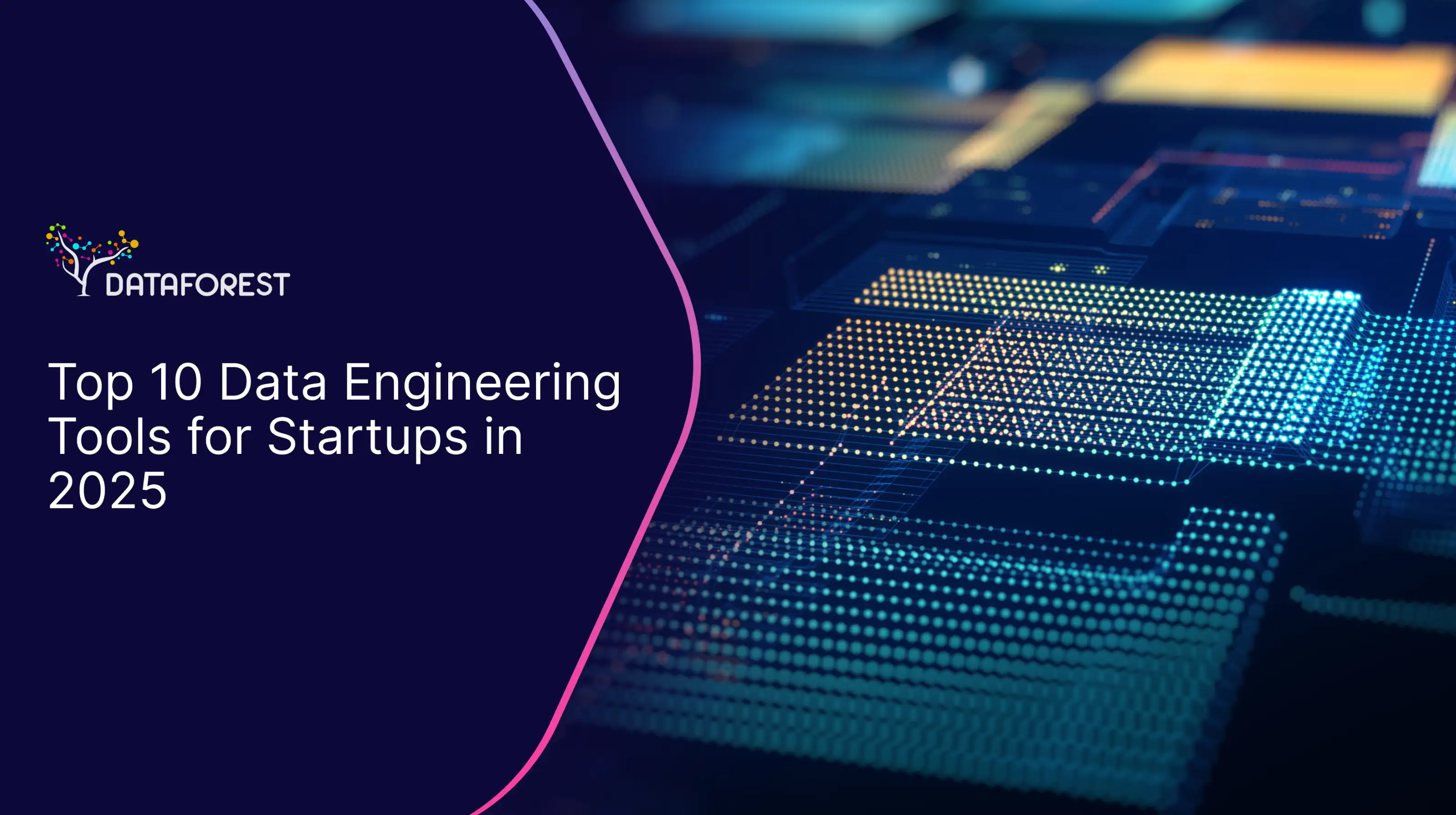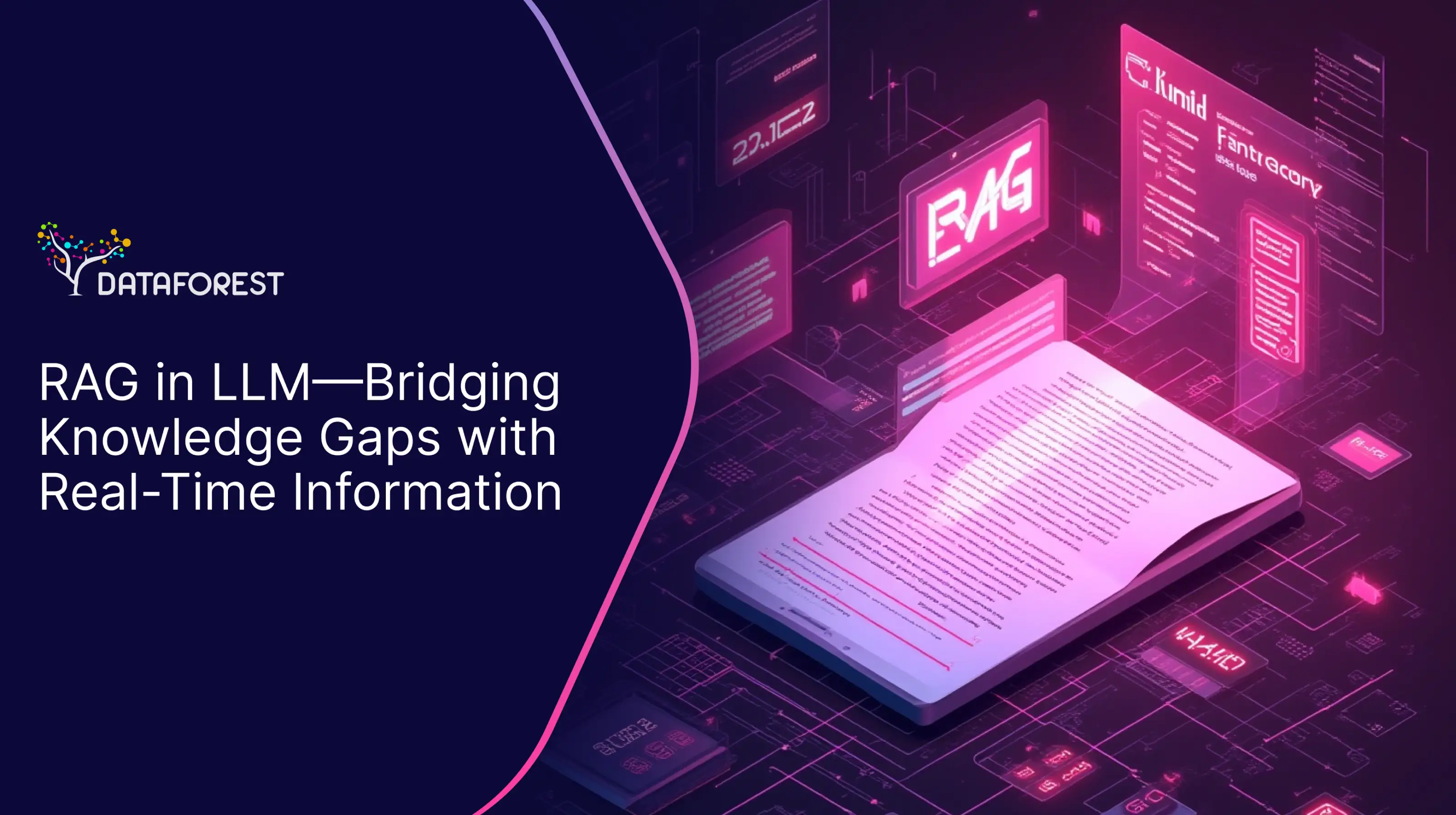AI Data Infrastructure: Automated Pipeline for Enterprise Info Processing
Our gen AI data infrastructure expertise aims to convert unstructured data into high-quality and AI-ready resources that power machine learning and generative AI data pipelines. This is accomplished through AI data management infrastructure, governance frameworks, and scalable processing technologies.




PARTNER

PARTNER
FEATURED IN

01
Design AI Data Infrastructure
Architect a scalable and secure data architecture and data infrastructure for AI that efficiently connects data sources, processing tools, and model training infrastructure through modular, cloud-native technologies.
02
Prepare LLM Data
Curate, clean, and normalize large language model datasets by implementing advanced filtering, deduplication, and quality assessment techniques to ensure high-fidelity training inputs for LLMs.
03
Manage AI Training Data
Create centralized repositories with version control, metadata tracking, and access management for systematically organizing machine learning training datasets with a focus on ML model reproducibility.
04
Build ML Data Pipelines
Develop automated end-to-end data workflows that seamlessly extract, transform, validate, and route diverse data types across distributed ML systems as part of a scalable AI data infrastructure.
05
Govern AI Model Data
Implement compliance, privacy, and ethical frameworks that track data lineage, ensure regulatory adherence, and maintain transparency in AI model training processes through AI data governance.
06
Label AI Training Data
Deploy semi-automated annotation systems using intelligent data labeling and machine learning to efficiently classify, tag, and structure unstructured data for supervised learning.
07
Scale AI Training Infrastructure
Design high-performance computing architectures with optimized networking, GPU/TPU acceleration, and scalable training platforms to maximize model training efficiency in your AI-native data infrastructure.
Data Infrastructure for AI in Industries
These solutions are specialized AI data management infrastructures designed to transform industry-specific raw data into AI-ready resources while addressing unique sector challenges. Each solution enables advanced machine learning and predictive modeling tailored to specific sector requirements.
AI Data Infrastructure Process Steps
Our goals are streamlined data handling and optimization, ensuring that data flows seamlessly from ingestion to actionable AI outputs while maintaining quality, security, and scalability.

Data Sourcing
Hunt down quality data from diverse sources – APIs, web scraping, databases, you name it. Ensure it’s reliable and relevant for training AI models within your AI data infrastructure.
01
.svg)
Data Cleaning
Strip out the junk, fill gaps, and format the data into something your AI can learn from – think normalization, deduplication, and standardization as part of your AI data management infrastructure.
02
.svg)
Privacy & Compliance
Lock down sensitive info using encryption, anonymization, or differential privacy techniques to stay compliant with regulations like GDPR or HIPAA, enforced through a robust AI data infrastructure.
03

Scalable Storage
Set up storage and processing systems that can handle massive datasets and scale up as your AI needs more training fuel—a cornerstone of adequate AI-native data infrastructure.
04
.svg)
Bias Mitigation
Test your data for skewed patterns, then fix them with fairness-focused tools or rebalanced datasets to keep the model outputs ethical within your data infrastructure for AI.
05

Real-Time Integration
Plug into live data streams or updates to keep your AI models sharp with the latest and most relevant inputs, enabled by a responsive AI data infrastructure.
06
.svg)
Resource Optimization
Tune your computational resources and training pipelines for speed and efficiency—leverage distributed computing or GPU acceleration where needed in your AI data management infrastructure.
07

Deployment & Monitoring
Roll out AI models into production and set up monitoring to catch performance issues or drifts in data over time, backed by a scalable AI-native data infrastructure.
08
The Challenges of Data Infrastructure for AI
DATAFOREST creates adaptable and secure AI data infrastructure that underpins mitigation through automation and AI-powered solutions, which are crucial to addressing these challenges at scale.

Ensuring Real-Time Data Streaming & Processing
The AI data infrastructure must support up-to-date AI model training by enabling efficient data ingestion and real-time processing.

Designing Scalable Systems for Growing ML Datasets
Handling increasing data size and complexity requires distributed storage, high-throughput processing, and optimized AI data infrastructure pipelines.
.svg)
Implementing Privacy-Preserving Techniques
Maintaining compliance with data privacy regulations involves techniques like differential privacy and secure multiparty computation, all managed through AI data management infrastructure.
.svg)
Optimizing Computational Resources
Advanced scheduling, distributed processing, and model compression are essential to enhance efficiency and reduce costs within your AI-native data infrastructure.

AI Dataset Curation
Collect, filter, and organize diverse data sources to create high-quality training datasets for machine learning models within a strong AI data infrastructure.

Training Optimization
Refine and preprocess training data to improve model performance, reduce bias, and raise learning efficiency as part of a mature data infrastructure for AI.

Data Storage
Create scalable, resilient storage architectures that enable efficient data access, versioning, and management across distributed AI data management infrastructure environments.
.svg)
Automated Annotation
Develop intelligent platforms that use machine learning to automatically label and classify training data with high precision and minimal human intervention, all within an optimized AI-native data infrastructure.

Scalable Infrastructure
Design high-performance computing environments with optimized GPU/TPU resources to accelerate model training and reduce computational bottlenecks in your AI data infrastructure.

Cross-Domain Integration
Develop methodologies to merge and standardize datasets from multiple domains, making comprehensive and versatile generative AI data pipelines possible.

Data Augmentation Techniques
Implement advanced techniques to synthetically expand and diversify training datasets to improve model generalization and robustness in a consistent AI data infrastructure.
.svg)
Predictive Data Quality
Develop intelligent monitoring and validation systems that proactively assess and predict the effectiveness and potential biases of training datasets, a core function of any adequate AI data management infrastructure.
FAQ
How can we optimize computational resources for large-scale AI model training?
We can use distributed computing frameworks like Apache Spark or Horovod to split workloads across multiple machines, cutting down training time. Techniques like model pruning, quantization, and mixed-precision training also reduce computation without sacrificing accuracy, especially when embedded in AI-native data infrastructure.
What techniques ensure reproducibility and traceability in ML data pipelines?
Version control for datasets, code, and model configurations, using tools like DVC or MLflow, ensures that everything is trackable. Logging frameworks and metadata tracking help you recreate experiments exactly as they were run within your AI data management infrastructure.
How do you handle data heterogeneity across multiple sources for AI training?
Data normalization techniques align formats, while transformation pipelines map fields and schemas into a standard structure. Automated tools like data catalogs and schema registries make it easier to manage this complexity inside an AI data infrastructure.
What approaches minimize data leakage and overfitting risks?
Strictly separating training, validation, and test datasets avoids data leakage. Regularization techniques like dropout, L2 norm penalties, and cross-validation help generalize models and reduce overfitting. These are best enforced within a controlled AI data management infrastructure.
How do you manage data versioning and lineage in complex ML projects?
Implement tools like Delta Lake or Git-based systems for dataset versioning to keep track of changes over time. Metadata systems map out lineage, showing how data flows through pipelines and is used in model training as part of your AI data infrastructure.
Let’s discuss your project
Share project details, like scope or challenges. We'll review and follow up with next steps.


.svg)


.svg)
























































